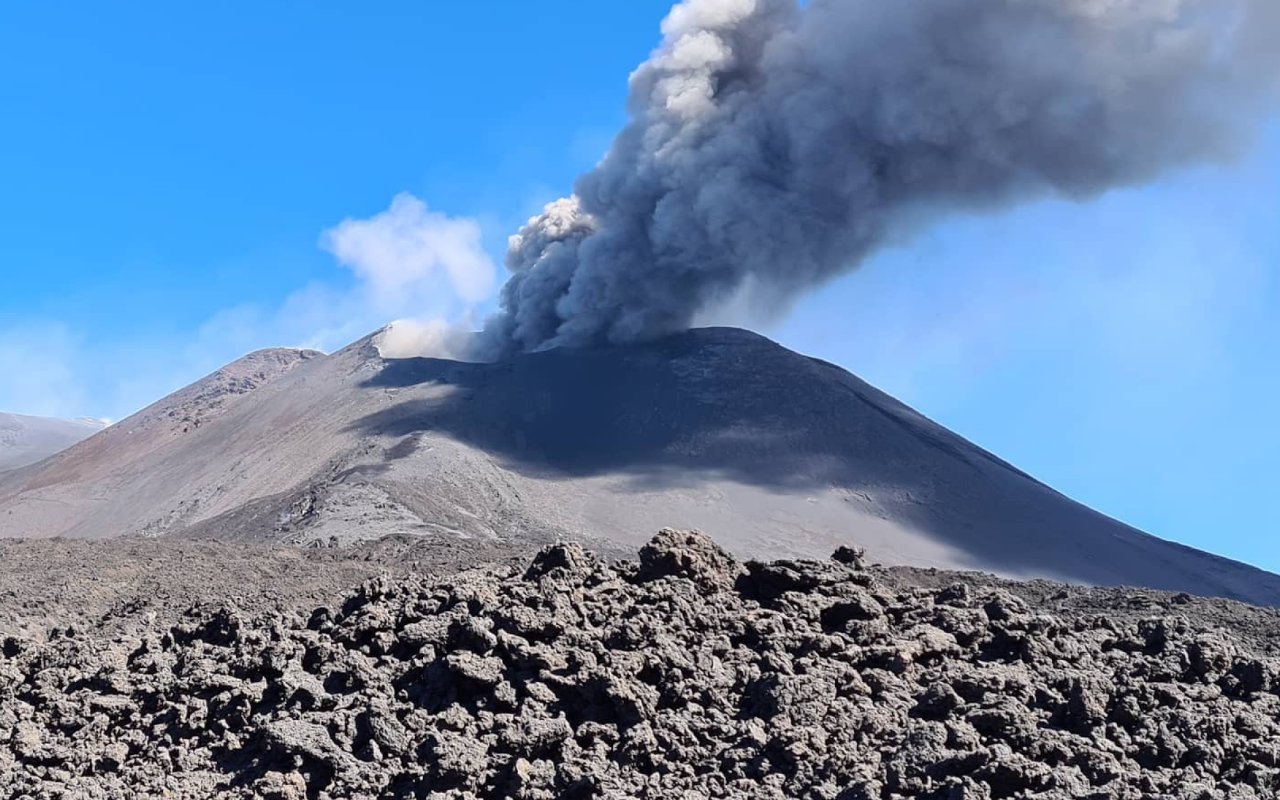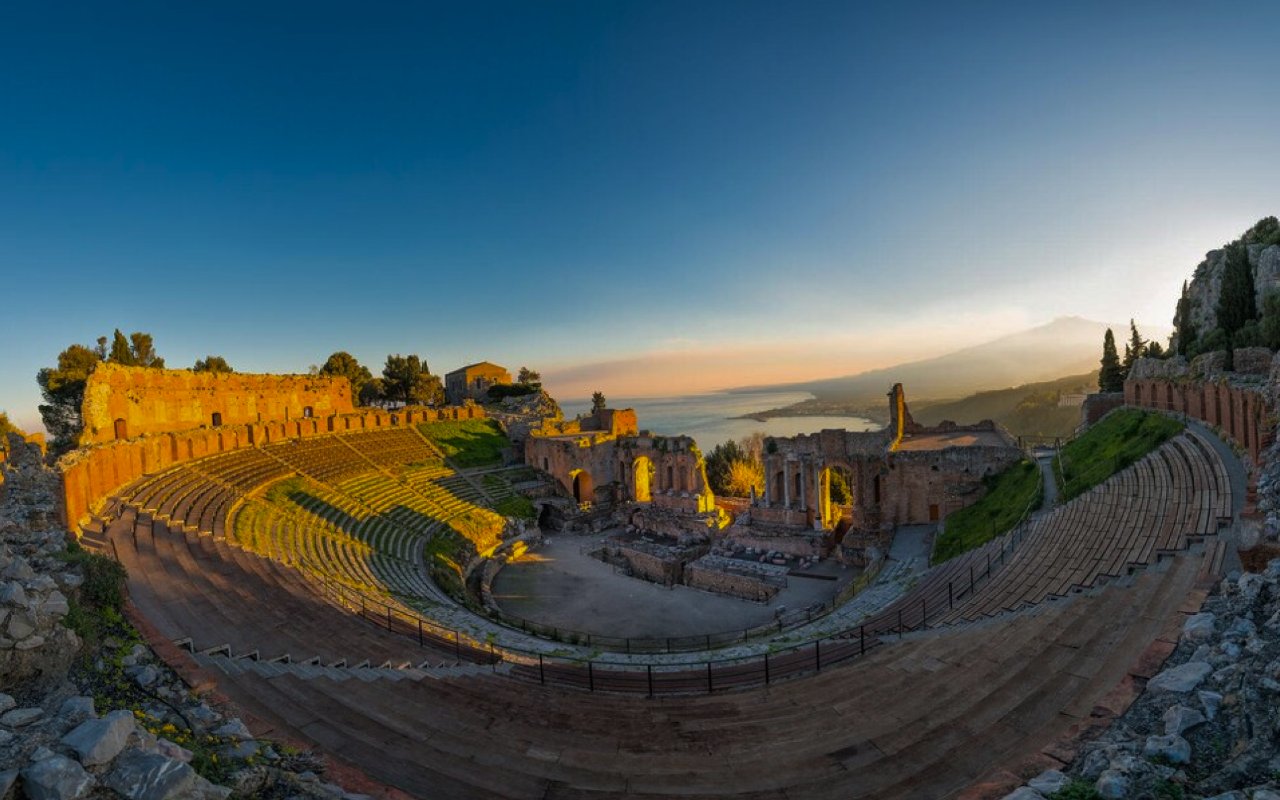The last lateral eruption of Etna, which occurred on Christmas Eve of 2018 and ended after only three days, represents a very particular phenomenon due to the disproportion between the seismicity and recorded deformations and the small eruption observed. On the 24th morning, an eruptive fissure spread from the South-East Crater into the Valle del Bove, for a length of about 2 km kilometers. From there came a lava flow that was fed until December 27th, while the explosive phenomena that had accompanied the first phase of the eruption had already been exhausted after just a few hours from the beginning.
It was not a significant eruption, neither for volumes of lava emitted nor for intensity. Nothing exceptional, indeed, had it not been for the significant seismic activity that preceded and accompanied this phenomenon for days, even after the end of the eruption itself. Thousands of earthquakes have been recorded not only in the summit area of Etna, where the eruptive fracture has opened, but also along the well-known faults of Ragalna (in SW), of Pernicana (in the North-East), of Trecastagni (in the South); many of these seismic events have been felt by the inhabitants of Catania and the piedmont countries.
On St. Stephen’s Day, two days after the eruption began, the highest energy seismic event, with moment magnitude (MW) equal to 4.9, was recorded along the Fiandaca-Pennisi fault system has damaged several settlements on the lower southeast flank of Etna. All the faults that affect the flanks of the volcano were activated, up to its periphery.
So much energy for such a small eruption?
In addition to what has been obvious to all, the monitoring networks of the Etneo Observatory have registered much more. All systems have detected considerable changes in the monitored parameters. Not only the seismic network, but also those that detect soil deformations, composed of sensors of different types and able to measure the deformations of the volcano with millimetric precision. The soil deformation data showed considerable values, disproportionate to an eruption of such modest size.
An exceptional spatial detail was provided by satellite images acquired from the European Spatial Agency (ESA) satellites Sentinel 1A and 1B, equipped with a particular SAR (Synthetic Aperture Radar) system. From the comparison of the two SAR images acquired on 22 and 28 December 2018 it was possible to measure the change in shape – the deformation precisely – which occurred in that short period of time, which showed the volcano practically divided into two lobes with opposite movement.
This satellite image of the deformation (interferogram), produced at the INGV Observatory, immediately went around the web and was nicknamed ‘the butterfly of Etna’ because of its shape, with the two lobes reminiscent of the wings of a butterfly (Fig. 2).
Thanks to the high detail provided by the analysis of satellite interferometry data it was possible to resolve the discrepancy between such a small eruption and the large energy involved. The results of this study – just published in the international journal Terra Nova – showed that Etna was preparing to produce a very different eruption, with the large volume of magma that was rising from the depths towards the surface, drawing from a source at around 5 km deep.
It was the ascent and thrust of the magma from the depths to deform the volcano so much, stimulating all the faults and also generating all the seismicity. The strong deformation has practically divided the volcano into two, moving the two halves in the opposite direction; at the top, this ‘stretch’ has favored the propagation of a radial fracture, with respect to the summit craters, which probably opened the way to an already resident magma, which was stationed in the ducts, just below the surface, below the South crater East.
The eruption of Christmas 2018 was therefore only ‘a side effect’ compared to the one that was being prepared. Something has blocked the ascent of the magma, which has stopped around sea level and is still there to cool and slowly degas.
The authors hypothesize that it was precisely the great energy dissipated in the seismic swarm that slowed the ascent of the magma and thus determined its arrest. However, this hypothesis requires further studies, based on in-depth analysis of the multidisciplinary monitoring data of the INGV, in order to be verified and refined.
Thanks to modern and sophisticated ground and satellite monitoring systems, and to their continuous evolution, we are increasingly able to detect otherwise invisible aspects, which give us access to valuable information for the correct understanding of volcanic phenomena; these, in turn, open new points of view and new questions, in the continuous and profitable path of knowledge.




